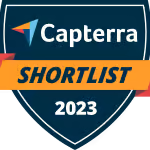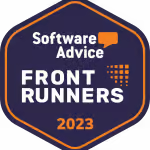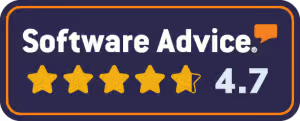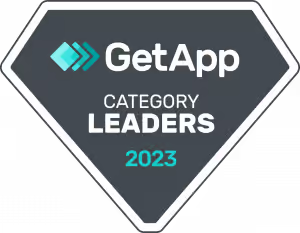Every day, we receive thousands of marketing messages, whether it’s on social media, in our inboxes or on the podcast we listen to on our drive into work. Most marketers agree the average person is exposed to 5,000 to 10,000 ads daily. So how do you stand out from all that noise? How does your message transcend and capture people’s interest? The answer is first-party data collection.
According to a 2023 report by Statista, 90% of U.S. consumers found marketing personalization very or somewhat appealing. And Wunderkind’s 2023 Marketing Trends report found that seven in 10 Americans expect brand communications to be tailored to their preferences. So in today’s digital landscape, collecting and owning first party data is crucial.
First-Party Data Gives You an Operating Edge
Guy Tasaka, founder and managing partner of Tasaka Digital, has spent 35 years leading change in the industry and helping media companies navigate business transformations. He challenges the common misconception that just collecting names and email addresses is enough for data collection.
Instead, he recommends publishers invest in a customer data platform (CDP). CDPs collect all sorts of data on readers, including preferences, interests, names and email addresses. Then, publishers can use this data to categorize and group their customers into different audience segments, serve customized content, and target the right customer with the right advertising.
“Now, a publisher has something nobody else has. Google, Facebook, Apple—they don’t have granular detail. You can combine with voting records to create Republican, Democrat and Independent segments. You now have people looking at school districts and homes and can create young family segments.”
But more so than just having these detailed audience segments, first-party data gives you as a publisher something you can sell or even hand down to your children. “Now the publisher has an asset they can sell, that they can give to their children. That’s the whole first-party data play,” Guy said.
Enriching Your First Party Data for Great Segmentation
But sometimes, just collecting the data isn’t enough. Often, you need to enrich your first-party data with data from third-party sources like LinkedIn or ZoomInfo to create great audience segmentation.
Industry professional Ross Furukawa, president and co-founder of the Santa Monica Daily Press, shares an in-depth look at how his team collects data from third-party sources and uses it to improve their top-of-funnel marketing campaigns.
For their outbound marketing, his team usually relies on “scraping” data, a process of capturing all available data on third-party websites and saving it for future use. At the Santa Monica Daily Press, Ross shared that Google Maps and LinkedIn are their main go-to’s for data scraping.
Through Google Maps
“Google Maps is a little more open. You can go and grab phone numbers, email addresses and URLs. We just did a campaign where we wanted to find all the physical therapy offices so we did a data scrape of our trade market, and we scraped every physical therapy office in the area.”
Through LinkedIn
“We use LinkedIn quite a bit, but we don’t pay for Sales Navigator. We have this tool that goes and creates connections all day long. It’s got a whole sequence. Let’s say we’re going after yoga studios in Santa Monica. Then we look up by title like marketing or anybody who would be making an advertising decision. It kicks back a couple hundred results.”
But Ross and his team don’t just take all the data they scraped and immediately dump it into their CRM. They have a three-part process for weeding through the additional data and using it in their campaigns to improve results. First, they send an email campaign, enriched it with the data they’ve just collected. Then a personalized voicemail, followed by a personalized text message.
“So we’re taking all those cold email, cold call, cold text, and doing them all at the same time so people know we really want to get a hold of them—and that initiates the callback. Depending on the vertical,” Ross explained, “We get anywhere from a three percent to a 10% return rate of people calling us back, starting a conversation. And then those we convert from that callback are about three to 10%, depending on the product and who we’re calling.”
Monetizing Through a First Party Data Strategy
Collecting and owning first-party data lets you segment your own audience to serve more personalized content and ads, improve your customer experience, and increase your revenue.
1. Data Sync with Local Businesses for an Omni-Channel Buy
Guy recommends going to local businesses and data syncing with them. Since local businesses capture minimal data, usually only leads or information from people who are ready to buy, they don’t have as much information on their shoppers at other stages in the buying process. As a publisher, here’s where your data can make a difference.
By syncing your first party data and placing a tracking pixel on their website, you’ll be able to provide that local business with a more in-depth view of their customer, you can charge more for the service, and you’ll get additional data out of the deal.
2. Customer Profiles and Business Intelligence for Advertisers
In the process of data-syncing with local businesses, you’re also collecting additional data on these users that you can later sell back to the advertiser in terms of detailed customer profiles, business intelligence and aggregate data of what their customers are interacting with on your site.
“So you go to the advertiser and say, we can sync your known and unknown users to our publisher website data. We can give you customer profiles and business intelligence about your users. We can tell you in aggregate what they’re looking at on our site. We can also retarget them on our site and find you look-alike audiences,” Guy explained.
3. Advanced Targeting in Your Owned and Operated Media
Now that you have this granularity of data and information on segmented audiences, you can sell that information to your advertisers. Having this exclusive data lets you charge extra for detailed targeting on your own site.
“Now the publisher has all this granularity of information that they can go to that advertiser and offer the most granular targeting possible. Because you now have more accurate, detailed information, you can expect a two to three percent CPM lift,” Guy said.
A Great First-Party Data Strategy Is Reader-Centric
While data collection often gets a bad rap for being company-focused instead of customer-focused, it doesn’t have to be that way. A great first-party data strategy is reader-centric. Publishing Strategist and former publisher Chris Johnson says data collection and strategy is less about generating revenue and more about ensuring a great customer experience.
“Owning first-party data and targeting has been so abused but it doesn’t have to be,” Chris explained. “We had readers tell us all the time that they appreciated the content and advertising we delivered. We provided them with both content and advertising to meet their needs where they were. That’s what it’s all about.”
First-Party Data Is a True Business Transformation
Any businesses of any size can capitalize on first-party data. You just need the right technology and the drive to make it work.
“This works at a media company of any size,” Guy explains. “And the technology is affordable and accessible. And the point is, they don’t have to do anything differently. They just have to put the tags on their website.”
While any size of company can make the plunge into first-party data collection, Guy warns that this strategy takes a mindset change in the way you’ve thought and operated for years. Now, you’re focusing on how many relationships you have with advertisers and what knowledge you have on your readers.
“This is a true business transformation effort,” Guy said. “This really changes the dynamics of who I am as a publisher or media company. A publisher was defined by their print circulation, by their Nielsen rating, by their web audience. None of that matters anymore. It’s about how many advertiser relationships you have and the value of your audience.”
Publishers Are in a Unique Position
Even though digital companies like Facebook and Google have been collecting and monetizing data for years, publishers are best set up to win from a first party data strategy because they have something digital companies don’t—audience trust.
Chris explained, “Publishers are the only organizations standing to benefit from first-party data strategy because you have your relationship with your audience. I would say that puts you in a pretty unique position to provide them with relevant information they’re going to be interested in. Maybe it’s just making them proud of their community and where they’re from. Maybe it’s making them aware of certain entertainment activities that enrich their lives. All those things, no other organization is in the full position to be able to do.”
